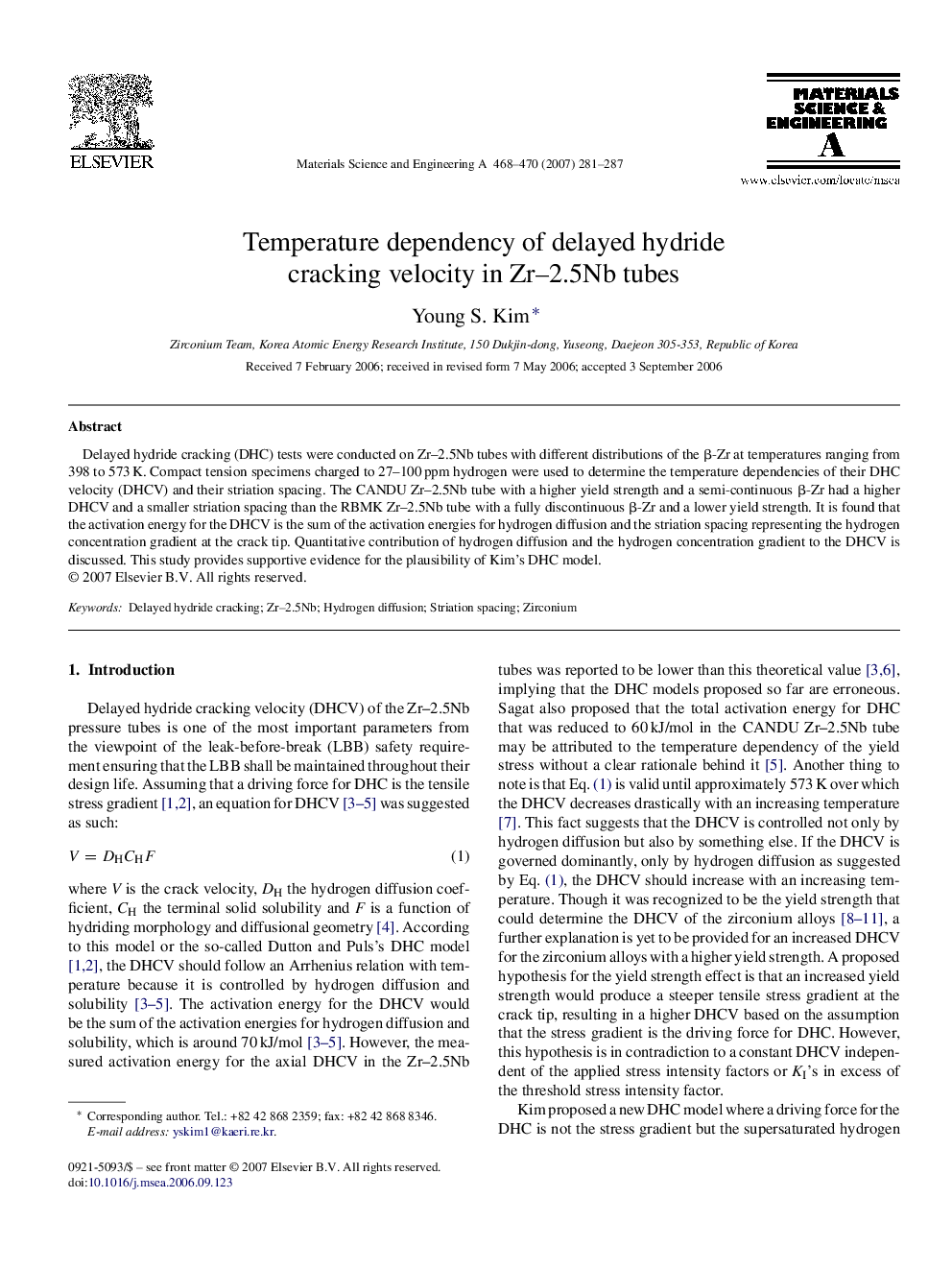| Article ID | Journal | Published Year | Pages | File Type |
|---|---|---|---|---|
| 1583350 | Materials Science and Engineering: A | 2007 | 7 Pages |
Abstract
Delayed hydride cracking (DHC) tests were conducted on Zr-2.5Nb tubes with different distributions of the β-Zr at temperatures ranging from 398 to 573 K. Compact tension specimens charged to 27-100 ppm hydrogen were used to determine the temperature dependencies of their DHC velocity (DHCV) and their striation spacing. The CANDU Zr-2.5Nb tube with a higher yield strength and a semi-continuous β-Zr had a higher DHCV and a smaller striation spacing than the RBMK Zr-2.5Nb tube with a fully discontinuous β-Zr and a lower yield strength. It is found that the activation energy for the DHCV is the sum of the activation energies for hydrogen diffusion and the striation spacing representing the hydrogen concentration gradient at the crack tip. Quantitative contribution of hydrogen diffusion and the hydrogen concentration gradient to the DHCV is discussed. This study provides supportive evidence for the plausibility of Kim's DHC model.
Related Topics
Physical Sciences and Engineering
Materials Science
Materials Science (General)
Authors
Young S. Kim,
